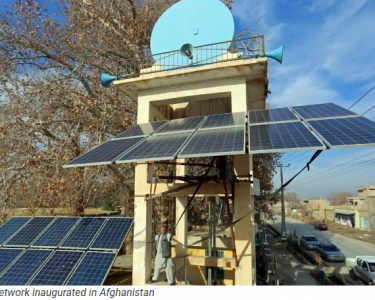SYDNEY, Oct 12 (NNN-AGENCIES) – Australia’s Bureau of Meteorology released today, a severe weather outlook for Oct to Apr, 2021, showing an increased risk of flooding for eastern Australia and tropical cyclones in the north, with roughly average potential for heat waves and severe thunderstorms.
In late Sept, the bureau upgraded the La Nina alert to an active event, saying, La Nina had developed in the Pacific Ocean, and warned changes in ocean temperatures and weather patterns over the Pacific are likely to remain until the end of this year.
The bureau said, the current La Nina was likely to bring more rain to eastern and northern Australia, with some drought-affected areas already seeing rainfall deficiencies ease and water storage levels increase.
La Nina is a climate pattern associated with cooler than average sea surface temperatures, in the central and eastern tropical Pacific Ocean. It typically results in above-average spring rainfall for Australia, and also means cooler days, more tropical cyclones and an earlier onset of the first rains of the wet season across the northern part of the country.
While recent decades have seen a decline in the number of tropical cyclones in Australia, climatologist, Greg Browning, said, this summer is likely to buck that trend.
“On average Australia sees nine to 11 tropical cyclones each year, with four crossing the coast. With La Nina this year, we are expecting to see slightly more tropical cyclones than average, and the first one may arrive earlier than normal,” Browning said.
He said, communities right across northern Australia need to stay prepared now, and stay informed from the very start of the tropical cyclone season in Oct, right through until Apr.
Meanwhile, though earlier and more rainfall will bring a better weather condition for the prevention of bush fire, the bureau warned that people should not be complacent.
“This fire season we’re expecting wetter than average conditions in eastern and northern Australia, so long-running large bushfires are less likely, however, a wetter spring can lead to abundant grass growth, which could increase fire danger as it naturally dries during summer,” Browning said.
“Meanwhile, if dry conditions continue in southwest Western Australia as forecast, the potential for more fire days there could increase.”
The Bureau’s General Manager of Decision Support Services, Sandy Whight, also said, the lower fire risk across much of Australia is no reason for complacency.
“Southern Australia is one of the most bushfire prone places in the world in any summer and it’s important to remember that, right across Australia, even short periods of hot and windy weather will raise fire risk, so communities need to have their bushfire plans ready.”– NNN-AGENCIES






